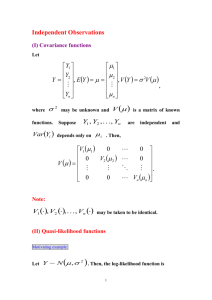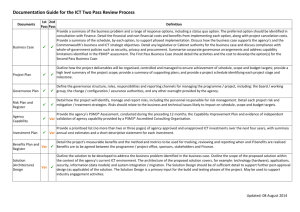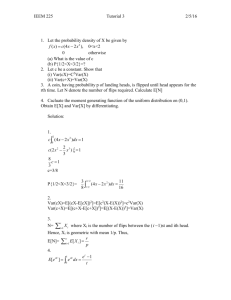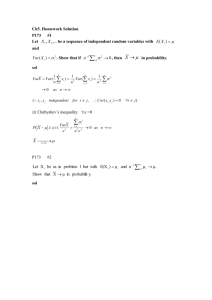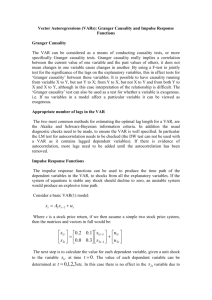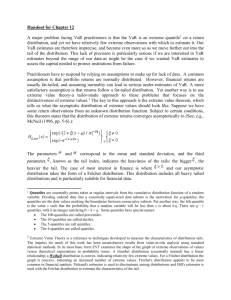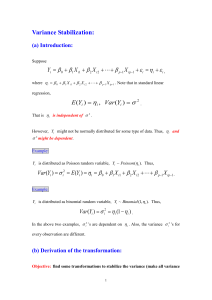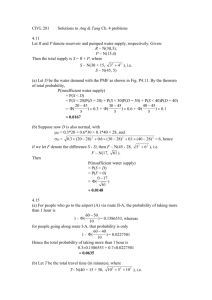Final Exam Question
advertisement
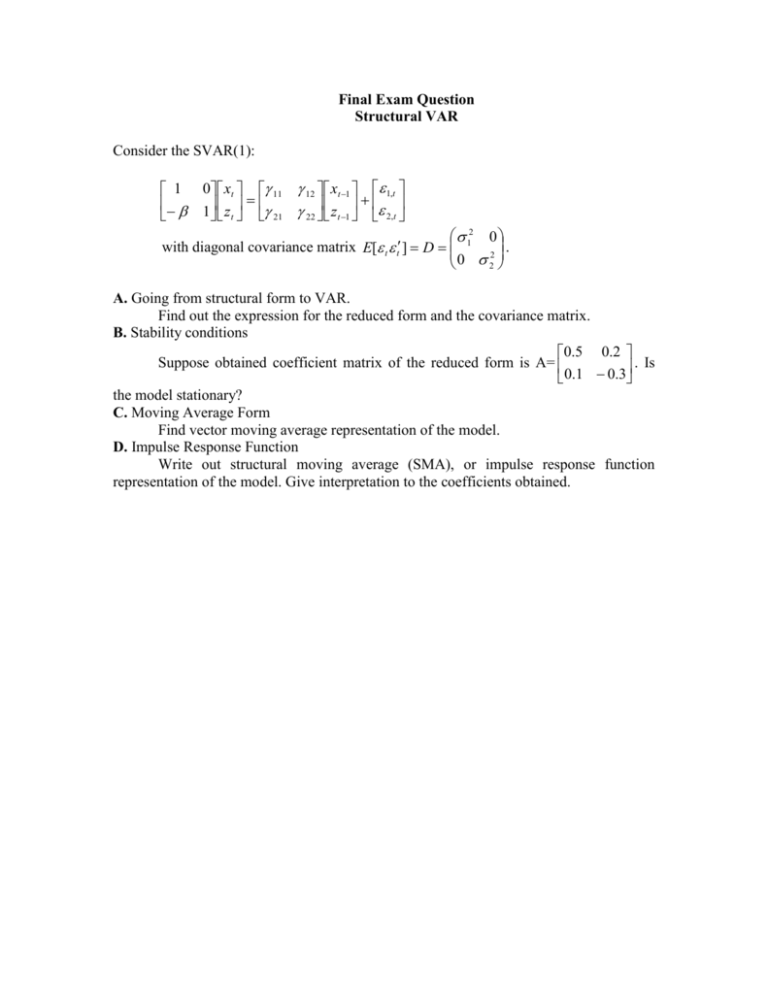
Final Exam Question Structural VAR Consider the SVAR(1): 1 0 xt 11 12 xt 1 1,t 1 z t 21 22 z t 1 2,t 12 0 . with diagonal covariance matrix E[ t t ] D 2 0 2 A. Going from structural form to VAR. Find out the expression for the reduced form and the covariance matrix. B. Stability conditions 0.5 0.2 Suppose obtained coefficient matrix of the reduced form is A= . Is 0.1 0.3 the model stationary? C. Moving Average Form Find vector moving average representation of the model. D. Impulse Response Function Write out structural moving average (SMA), or impulse response function representation of the model. Give interpretation to the coefficients obtained. Key: A. Going from structural form to VAR VAR (the reduced form) is obtained by premultiplying by B 1 : 1 0 1 B 1 AdjB 1 det B 1 0 11 12 xt 1 1 1 21 22 z t 1 A12 xt 1 u1,t A22 z t 1 u 2,t xt 1 z t 0 1,t 11 1 2,t 11 21 xt 1 1,t 12 22 z t 1 1,t 2,t 12 A11 A 21 As we see, 1,t u1,t , so the first VAR shock equals the first structural shock. The second VAR shock is a linear combination of the first two shocks. The covariance matrix of the VAR shocks is therefore: Var ( 1,t ) u1,t 12 12 1 Var ( 1,t ) 1 1 Cov B DB 2 det 2 B Var ( 1,t ) Var ( 1,t ) Var ( 2t ) 12 2 12 22 u 2,t B. Stability conditions The model is stationary when eigenvalues of A are all less than 1 in modulus. 0.2 0.5 det 0 0.3 0.1 (0.5 )( 0.3 ) 0.02 0 0.15 0.5 0.3 2 0.02 0 2 0.2 0.17 0 D 0.04 0.68 0.72 0.2 0.72 0.32 2 0.2 0.72 2 0.52 2 So, this is a stable VAR. 1 C. Moving Average Form As we have no intercept, the VMA for our model is: y t u t A1u t 1 A12 u t 2 ... u u1,t 1 xt u1t 2 1,t 2 I A A ... 2 1 1 z u t 2t u 2,t 1 u 2,t 2 xt 1 0 u1t 0.5 0.2 u1,t 1 0.5 0.2 0.5 0.2 u1,t 2 ... z 0 1 u 0.1 0.3 u 0.1 0.3 0.1 0.3 u 2t 2,t 1 2 ,t 2 t xt u1t 0.5 0.2 u1,t 1 0.27 0.04 u1,t 2 ... z u 0.1 0.3 u 0.02 0.11 u 2,t 1 2 ,t 2 t 2t D. Impulse Response Function Substituting ut= B 1 εt into VMA gives SMA and thus impulse response function representation of the model: xt 1 0 1t 0.5 0.2 1 0 1,t 1 0.27 0.04 1 0 1,t 2 ... z 1 0.1 0.3 1 0.02 0.11 1 2t 2,t 1 2 ,t 2 t xt 1 0 1t 0.5 0.2 0.2 1,t 1 0.27 0.04 0.04 1,t 2 ... z 1 0.1 0.3 0.3 0.02 0.11 0.11 2t 2,t 1 2 ,t 2 t At time t+s : xt s 1 0 1t s 0.5 0.2 0.2 1,t s 1 0.27 0.04 0.04 1,t s 2 ... z 1 0.1 0.3 0.3 2t s 2,t s 1 0.02 0.11 0.11 2,t s 2 t s Impulse response coefficients summarize how unit impulses of the structural shocks at time t impact the level of dependent variables at time t + s for different values of s. For example, for s=1 (0.5+02β) is the impulse response of x at time (t+1) to unit change in ε1 at time t.


